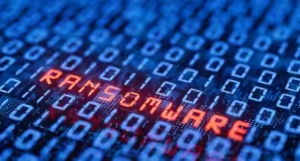In today’s digital world, our personal and professional lives are intertwined with technology. We rely on computers and mobile devices to store important data, communicate with colleagues, and access essential services. This dependence makes us vulnerable to cyberattacks, and one of the most concerning threats is ransomware.
What is Ransomware?
Imagine a thief breaking into your house, locking you out, and demanding a ransom to get back in. Ransomware operates similarly, but instead of physical doors, it encrypts your digital files, making them inaccessible. Hackers then demand a payment, usually in cryptocurrency, to unlock your data.
Here’s a breakdown of how a ransomware attack unfolds:
- Infection: The malware can infiltrate your system through various methods, such as phishing emails, malicious website downloads, or software vulnerabilities.
- Encryption: Once installed, the ransomware scans your device and encrypts your files, rendering them unusable.
- Ransom Demand: A message pops up on your screen, informing you that your files are locked and demanding a payment to decrypt them.
Why is Ransomware Dangerous?

istockphoto 1399980046 612×612
Ransomware poses a significant threat for several reasons:
- Data Loss: If you don’t have backups, losing access to your files can be devastating. Important documents, photos, and financial records could be permanently inaccessible.
- Financial Loss: The ransom demanded by hackers can be substantial, adding financial strain to businesses and individuals.
- Disruption: A ransomware attack can cripple business operations, halting productivity and causing significant downtime.
- Privacy Concerns: In some cases, ransomware may also steal your data, putting sensitive information at risk.
Who Targets Ransomware Attacks?
Ransomware attacks can target anyone – individuals, businesses of all sizes, and even government institutions. However, smaller businesses are often seen as easier targets because they may have less robust cybersecurity defenses.
How to Protect Yourself from Ransomware
There’s no foolproof way to guarantee complete protection, but following these steps can significantly reduce your risk of a ransomware attack:
- Strong Passwords & Multi-Factor Authentication (MFA): Use complex passwords for all your online accounts and enable MFA whenever possible. This adds an extra layer of security by requiring a second verification code after entering your password.
- Beware of Phishing: Don’t click on suspicious links or attachments in emails, even if they appear to be from legitimate sources.
- Keep Software Updated: Software updates often include security patches that address vulnerabilities exploited by ransomware. Update your operating system, applications, and firmware regularly.
- Regular Backups: Having a recent backup of your data is crucial. Store backups on a separate device or cloud storage to ensure they’re not affected by the ransomware attack.
- Security Software: Invest in reputable antivirus and anti-malware software that can detect and block suspicious activity.
- Employee Training: Educate your employees about cybersecurity best practices to help them identify and avoid potential threats.
What to Do if Infected by Ransomware?
If your device is infected with ransomware, here’s what to do:
- Disconnect from the Internet: This prevents the ransomware from spreading to other devices on your network.
- Do Not Pay the Ransom: There’s no guarantee that paying will unlock your files, and it could encourage future attacks.
- Report the Attack: Inform law enforcement and relevant authorities about the attack.
- Seek Professional Help: Consider contacting a data recovery specialist or a managed IT service provider like Virtual IT Group to explore recovery options. They can offer expert guidance and potentially assist in data restoration.
By understanding ransomware and taking proactive steps to protect yourself, you can significantly reduce the risk of falling victim to this cyber threat. Remember, prevention is always better than cure.
Here are some additional resources for staying informed about cybersecurity threats:
- CISA (Cybersecurity & Infrastructure Security Agency)
- FBI Cyber Division
By staying vigilant and implementing robust cybersecurity measures, you can safeguard your data and ensure your online safety.
For more information on Ransomware and other Cybersecurity issues, contact us now!

